There is no better place to go birding than North Carolina, which is a magnet any time of the year.
Its varied topography and stunning mountains provide a really breathtaking backdrop for birdwatchers.
There are over 470 different bird species in the state, making it among the most bird-diverse places in the world.
Some of these birds include North Carolina’s birds of prey.
To see these raptors, a trip to a wildlife refuge, park, or preserve is not necessary.
Due to their adaptability, birds of prey may be found in a wide variety of ecosystems, so it’s worth your time to go to places like prairies, grasslands, marshes, deserts, woodlands, and even mountain areas to see them.
| Image | Name |
|---|---|
 | Northern Goshawk |
 | Bald Eagle |
 | Rough-legged Hawk |
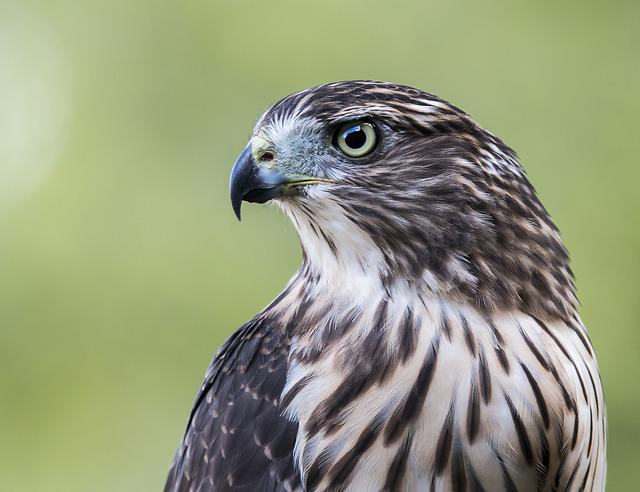 | Cooper Hawk |
 | Peregrine Falcon |
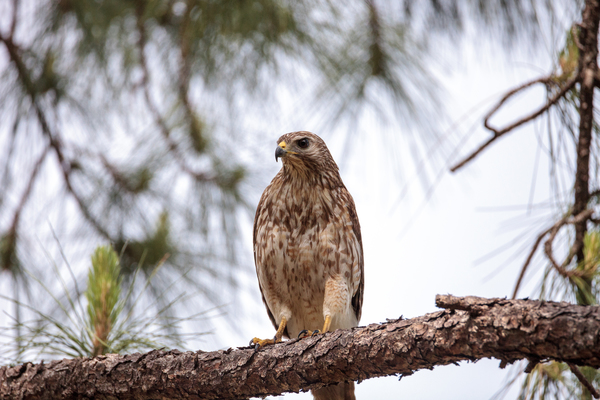 | Red-Shouldered Hawk |
 | Sharp-shinned Hawk |
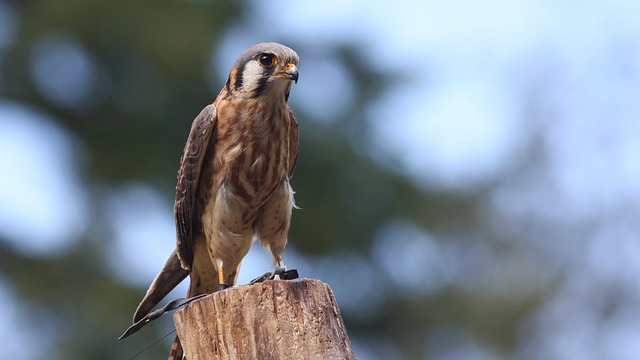 | American Kestrel |
 | Osprey |
 | Red-Tailed Hawk |
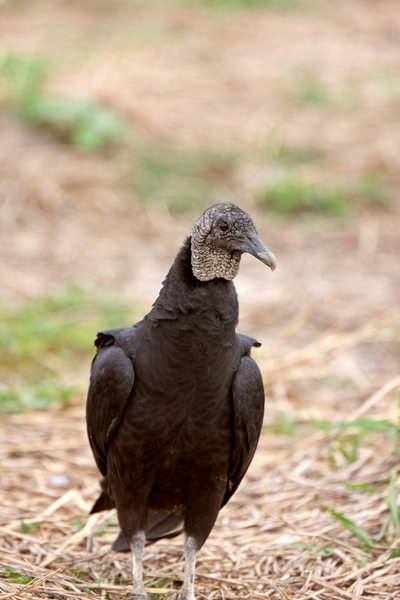 | Black Vulture |
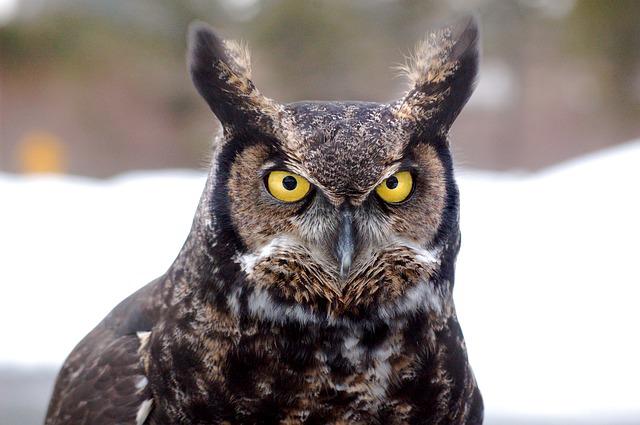 | Great Horn Owl |
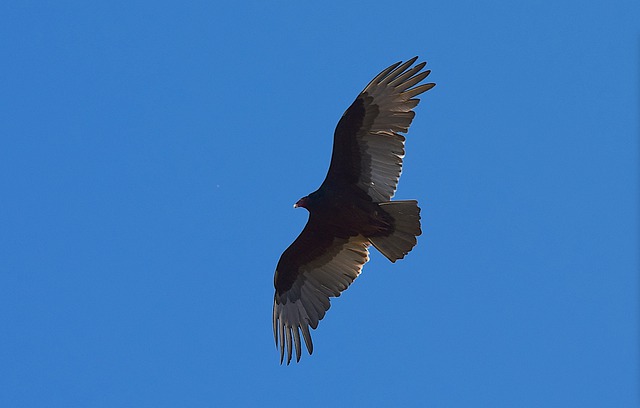 | Turkey Vulture |
Birds of Prey in North Carolina
1. Northern Goshawk

During the winter, northern goshawks may be spotted across North Carolina. They are larger and more dangerous than sharp-shinned hawks.
They are mostly grey in appearance, with large tails and wings.
These hawks mostly prey on small animals and medium-sized raptors. In search of prey, they perform brief bursts of swift flying.
They are prey for fishers, American martens, great horned owls, and other big hawks.
Northern Goshawks nest on the tops of deciduous trees within mixed woodlands.
Males are generally monogamous and often partner for life. Females hatch approximately two to four eggs, which develop in 31 to 38 days. Incubation is usually done by females.
Young birds begin to fly at the age of 4 to 6 weeks.
2. Bald Eagle

The eastern border of North Carolina is home throughout the year to a resident population of bald eagles.
The body and wing feathers of a bald eagle are dark brown, while the plumage on the tail and head are white, and the feet and beak, which are characteristically yellow, complete the eagle’s appearance.
The appearance of male and female Bald Eagles is quite similar to one another.
When it comes to finding these eagles, you’ll have the most luck in the areas near fish-rich reservoirs and lakes, as well as the woodlands that surround them.
During the winter months, you may frequently find them hunting around rivers, beaches, and reservoirs, as well as surrounding lakes that have not yet frozen over.
Food
Eagles are prey birds which means that they hunt and consume other birds, medium-sized mammals such as hares and rabbits, and other creatures such as reptiles and fish, and will even eat carrion if they have no other food alternatives.
Eagles can be found across Eurasia and North America. Because fish is the sole food that they consume, bald eagles are often referred to as fish eagles, despite the fact that they are eventually considered to be carnivores due to the fact that flesh is the only thing that they consume.
The average life expectancy of a bald eagle in the wild is around twenty years.
3. Rough-legged Hawk

Rough-legged hawks are common across North Carolina throughout the winter. They are quite rare in the state.
Some may be seen perched on poles along roadsides or flying over wetlands and wide meadows.
They have been dark-brown raptors named for their feathery legs.
Food
Rough-legged hawks mostly eat lemmings and voles. They also consume a wide range of mammals, tiny birds, and ground squirrels.
They hunt by flying over wide areas or perching and looking for prey.
These hawks construct their nests on steep cliffs or flat terrain. Others like to make their nests on branches of trees at the forest’s margin.
After the nest is completed, females hatch about three and five eggs, which incubate for around 31 days.
4. Cooper Hawk

Cooper’s hawks are common across the state of North Carolina and may be seen at any time of the year.
The upper head and back of Cooper’s hawk are grey, while the chest, legs, and underneath the wing have a combination of orange and white. Cooper’s hawks may be identified by these characteristics.
The males and females seem to be fairly similar to one another; nevertheless, the females are approximately thirty percent bigger than the other gender.
Habitat & Food
It is common to discover a cooper’s hawk in the vicinity of pines, Douglas-firs, spruces, oaks, beeches, and other types of trees.
These hawks prefer to live in deep forests and on level land rather than on steep slopes.
Regarding the food they consume, the majority of it consists of birds of medium sizes, such as flickers, robins, and jays, in addition to various smaller and even bigger species.
Their diet also includes a variety of other small animals, such as tree squirrels, chipmunks, bats, ground squirrels, mice, and so on.
On average, the lifespan of Cooper’s hawk is somewhere between 10 and 12 years; however, the age of the hawk with the longest lifespan on record was over 20 years.
5. Peregrine Falcon

Peregrine falcons might well be found across the eastern portion of North Carolina during the non-breeding months of autumn and winter while they move across the rest of the state.
Peregrine falcons are distinguished by their black head, back, and wings, as well as their yellow and black beak, mottled back, yellow feet, and white feathers on the stomach.
Females are once more the larger of the two, with males being around 33% smaller.
Habitat & Food
Peregrines inhabit a wide range of habitats, including tundra, deserts, mangroves, dry woods, scrubland, grasslands, seashores, marshes, and rugged mountains.
Peregrine falcons primarily feed on other smaller birds such as shorebirds, ducks, pigeons, other smaller animals, and on rare occasions, carrion.
Peregrine falcons may survive in the wild for five to six years and in captivity for up to sixteen years.
6. Red-Shouldered Hawk

These red-shouldered hawks are permanent inhabitants of the state of North Carolina, where they may be seen throughout the year.
It is possible to identify a red-shouldered hawk by its orange-colored chest, face, and neck, as well as its red-colored shoulders, as well as its dark brown and white striped wings, and tail plumage.
The females are about 24% to 30% bigger than the males, despite the fact that their appearance is identical to that of the males.
Habitat
These hawks may be found in forests that have a mixture of coniferous and deciduous trees and open understory areas.
They are most at home in moist woods, especially those that are located in lowlands close to water bodies such as rivers, streams, marshes, and swamps.
Because they are birds of prey, red-shouldered hawks usually feed on other animals, including reptiles, frogs, mammals, birds, and even crayfish.
It is estimated that a red-shouldered hawk lives between fifteen and nineteenth years on average. However, those kept in captivity have been reported to live for up to twenty-six years.
7. Sharp-shinned Hawk

Sharp-shinned hawks are typically non-breeding inhabitants of eastern North Carolina and might stay across the state all year.
These hawks may be identified by their grey back and wings, white and brown abdomen and chest, and yellow feet. Females resemble males but are around one-third bigger.
Habitat & Food
Sharp-shinned hawks inhabit coniferous or mixed woods, thickets, open deciduous woodlands, and margins.
These hawks will frequently consume birds ranging in size from a sparrow to a robin and, in rare instances, birds as large as quails.
They also consume snakes, bats, rodents, squirrels, frogs, lizards, and big insects on occasion.
Sharp-shinned hawks normally live for five to six years on average, while some might survive for ten years or more in the correct circumstances.
8. American Kestrel

The American kestrel is a bird that may be seen across the state of North Carolina at any time of the year.
The American Kestrel may be identified by its spotted orange, black, grey, and white feathers.
This includes an orange back having a black horizontal stripe, black tail feathers, grey wings, and orange sides, as well as a white and grey head having two vertical black lines painted near each eye.
The majority of females have a light brown color.
Habitat & Food
The American Kestrel inhabits a wide range of open or semi-open environments, ranging from woodland clearings to farms to deserts, and it may be spotted in any of these places.
Voles are their primary source of nutrition, although they also consume other small mammals like wood mice and shrews, earthworms, tiny birds, and insects.
However, shrews and wood mice make up the majority of their diet.
It is believed that the average lifespan of a wild American kestrel is around five years, although captive individuals have been reported to survive for over Seventeen years.
9. Osprey

When breeding, ospreys may be located along North Carolina’s eastern border, and whenever migrating, they can be spotted across the state.
Ospreys are distinguished by their brown back and wings, white breast and neck with brown accents around the throat, yellowish eyes, and black beaks.
Males and females seem quite similar, while females are around 20% bigger.
Habitat & Food
Ospreys may be spotted around big bodies of water such as lakes, rivers, and coastal locations. What they consume consists mostly of medium-sized fish such as trout, salmon, mullet, and flounder, as well as the occasional smaller one.
These large birds have been seen to live for an average of fifteen to twenty years, with the maximum documented age reaching 32 years.
10. Red-Tailed Hawk

The state of North Carolina is home to resident red-tailed hawks during the course of the whole year.
The body and the wings of these hawks are brownish, while their breasts are white and their tails are crimson.
The primary distinction between males and females would be that they are about one-third bigger than their male counterparts.
The meadows, deserts, agricultural fields, woodlands, and urban regions of the state are just some of the sites in the state where these red-tailed avians may be seen spending their time.
The red-tailed hawk is a carnivorous bird of prey, meaning that it consumes meat from other animals, including fish, rodents, other birds of a smaller size, and even carrion.
The lifespan of a red-tailed hawk in the wild is estimated to be between fifteen and twenty years.
However, a captive red-tailed hawk may reach the high end of that range and live for around twenty years.
11. Black Vulture

All year, black vultures may be seen throughout North Carolina.
Black vultures are distinguished by their nearly totally black body with grey accents on their feet and head. Because male and female vultures are not sexually dimorphic, it is difficult to distinguish between them.
Habitat & Food
Black vultures may be found all year in wooded and open environments, with the majority of them spending their time at lower altitudes.
Vultures are predators by nature, and this is especially true in this area since their principal food supply is carrion.
They prefer to feed on fresh corpses, although they may eat the same carcass for many days.
On rare occasions, black vultures may pursue live prey. However, this is because live prey, whether birds or mammals, are weakened or sick, rendering them a simpler capture.
In terms of lifetime, wild black vultures typically live for ten years, although caged ones may survive for thirty years.
Check out this article on Types of Vultures.
12. Great Horn Owl

From spring through winter, it is possible to see a great horned owl almost everywhere across the state of North Carolina.
It is possible to recognize these giant horned owls by their brownish-gray plumage, but the tuft of feathers on the top of their heads that resembles a horn or an ear is the distinguishing characteristic of this species.
The appearance of male and female Great Horned Owls is very similar, with the exception that females are somewhat bigger than males.
At night, these birds will sit on a branch or a nearby building to search around there for prey. Once they have observed the prey, they are looking for it.
They will fly towards it with their wings folded. Once they have their prey, they will catch it with their claws, which will pierce through their body and, in most instances, kill them immediately.
Food & Habitat
In terms of their diet, these birds consume a variety of smaller prey items, such as frogs, rodents, and scorpions.
These predatory birds are capable of devouring even bigger prey items, such as geese, ducks, hawks, and owls, with lower body sizes.
The great horned owl may be located in a variety of environments, the most frequent of which are marshes, deserts, grasslands, woods, backyards, and towns.
They might also be seen in semi-open habitats between the Arctic and the tropics.
The lifetime of a great horned owl may range from fifteen to twenty-five years, depending on the individual bird.
13. Turkey Vulture

Turkey vultures are common across the state of North Carolina during the whole year.
The feathers of turkey vultures are predominantly brownish or black in color, and there is a grey or silvery line on the underside of their wings, which provides a contrast to the rest of their look.
The head is mostly black, and the pink or red face is capped with a beak that is a very light shade of white.
The only thing that differentiates these scavengers from one another is their sexual anatomy since they are monomorphic and hence have identical appearances.
Food & Habitat
There are turkey vultures all across North America, and you can find them in open and wooded areas.
They also tend to stick to the lower elevations of mountain ranges when they are in the mountains.
However, turkey vultures will also consume dead birds, reptiles, invertebrates, and amphibians, in addition to carrion being their major source of nutrition.
Vultures, in general, choose fresher carrion, although these particular vultures, like all vultures, are able to devour the same cadaver over many days.
The average lifespan of a turkey vulture in the wild is around 16 years; however, they may live up to 30 years in captivity.
Conclusion
Birds of prey are a distinctive part of North Carolina’s fauna. It’s tough not to appreciate their fearless demeanors and quick movements.
Along with Prey Birds, the Old North State is noted for its colorful woodpeckers that perch on tree trunks, so keep your ears and eyes peeled for these feathery percussionists.
Whether you want to appreciate or shun these feathered hunters, keep in mind that their distribution is typically directly related to their eating habits – they reside where they are able to survive!
FAQ
What are North Carolina's largest birds?
The albatrosses are one of the biggest flying birds, with the genus Diomedea’s great albatrosses having the longest wingspans of any living bird. Throughout North Carolina, 2 species have been discovered.
What species of hawk resembles an owl?
Northern Harriers have the most owl-like appearance of any hawk. A facial disc is a parentheses-like marking or circle all around the face of both Northern Harriers and owls.
Last Updated on March 22, 2023 by Lily Aldrin
